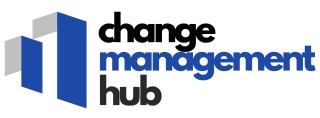
Understanding the landscape of CPG procurement
Examining the CPG Procurement Ecosystem
The consumer packaged goods (CPG) industry is a dynamic and evolving landscape. Companies in this sector face unique challenges that necessitate a deep understanding of the intricacies involved in procurement. With a diverse array of products and the constant need to meet ever-changing consumer demands, it becomes imperative for them to be agile and adaptive.
Procurement processes within the CPG industry are tightly intertwined with the wider digital transformation efforts. As these industries are increasingly driven by data and analytics, the role of procurement has become pivotal in ensuring that companies remain competitive. Effective data management and governance are crucial, providing valuable insights into supply chain efficiencies, customer demand forecasts, and product development.
Businesses must also recognize the importance of mastering data to streamline their operations. From leveraging consumer data for personalized marketing to utilizing technology for seamless supply chain management, the scope of digital tools is vast. CPG companies are investing in robust systems that can handle complex procurement functions, from data-driven decisions in direct-to-consumer models to ensuring that their supply chain remains resilient amidst disruptions.
Furthermore, CPG firms need to focus on customer experience in procurement. How can companies ensure that their product offerings align with customer expectations? Through insightful analytics and customer feedback, businesses can pivot their strategies effectively. Technology and data insights thus serve as the backbone, driving procurement actions towards successful outcomes in the CPG space.
Key challenges in digital transformation
Challenges Arise in the Pursuit of Digital Excellence
The digital transformation journey in consumer packaged goods (CPG) procurement is fraught with significant challenges. CPG companies are grappling with the need to integrate advanced technologies such as analytics and data management into their existing systems. This endeavor demands not only substantial financial investment but also expert insights to ensure that the transformation aligns with business objectives and enhances customer experience.
- Data Management Complexities: Handling vast amounts of customer data in a CPG digital environment is a daunting task. Effective data governance becomes crucial as companies aim to leverage data-driven insights for better demand forecasting and supply chain management.
- Integration with Existing Systems: Nurturing a seamless integration between new digital capabilities and existing procurement systems is often met with resistance. Companies must strategize to overcome such hurdles and ensure that digital transformation efforts do not disrupt their supply chain operations.
- Cultural Shifts and Resistance: As organizations move from traditional procurement methods to digital solutions, they face resistance from employees accustomed to conventional practices. This highlights the necessity of fostering a culture of adaptability across the organization.
To navigate these challenges successfully, businesses must evolve with the changing consumer goods landscape and stay ahead of the competition. More insights on how businesses must evolve to thrive are pivotal in understanding the intricacies of transformation.
Strategies for effective change management
Effective Strategies for Managing Change During Digital Transformation
Leading a successful digital transformation in consumer packaged goods (CPG) procurement requires a cohesive change management strategy. Companies must navigate shifts in their business models and operations to keep pace with technological advancements and evolving customer demands. Here’s how they can do it efficiently:
- Communicate the Vision Clearly: It’s essential for the leadership to convey the digital transformation goals compellingly to all stakeholders. A clear vision that outlines the benefits for the company, the employees, and the supply chain will create a shared understanding and motivate teams to adapt.
- Engage Staff Early and Often: A proactive engagement approach ensures that employees at all levels contribute to the transformation process. By involving staff in planning and execution, companies can foster a sense of ownership and lower resistance to change.
- Invest in Training and Development: Equip your team with the necessary skills to handle new digital tools and systems. Investing in comprehensive training programs can bridge the knowledge gap and empower your workforce to leverage technology efficiently.
- Create a Feedback Loop: Establishing a feedback mechanism helps in gathering insights from employees and stakeholders, which are critical for identifying areas needing adjustment. Regular feedback ensures that the transformation trajectory aligns with business goals and addresses customer experience effectively.
- Align Your Culture with Digital Goals: Building a culture that embraces adaptability is fundamental. Encourage innovative thinking and reward adaptability across various business units. This cultural shift will help CPG companies adapt to market demands and optimize their digital transformation efforts.
By weaving these strategies into the fabric of the organization, CPG companies can better manage change and position themselves for successful digital transformation. For more on how change management can aid in transformative initiatives, explore insights from leading consulting experts.
Leveraging technology for successful transformation
Harnessing Advanced Tools for Seamless Change
In today's rapidly evolving CPG industry, leveraging technology is essential for successful digital transformations. By integrating advanced systems and data analytics, companies can navigate the complex landscape of procurement and supply chain management more effectively. Embracing these tools allows for a more data-driven approach to decision-making, yielding valuable insights into consumer behavior and supply chain dynamics.
Implementing technology such as google cloud and other innovative platforms can streamline data management processes. This enables companies to maintain master data governance and enhance overall data integrity. As a result, businesses can adapt more swiftly to market demands and improve their response strategies.
Additionally, the use of modern technology facilitates better demand forecasting. By analyzing customer data and product trends, CPG companies can optimize their inventory levels and predict supply chain requirements with greater precision. This not only minimizes costs but also enhances the customer experience by ensuring that products are available when and where they are needed.
Furthermore, integrating digital tools provides marketing teams with enhanced capabilities to tap into consumer insights and tailor their strategies accordingly. With access to comprehensive data analytics, companies can refine their marketing efforts, targeting customers more effectively and driving growth in the competitive CPG market.
The strategic adoption of technology also supports the development of a flexible, resilient infrastructure. CPG industries that invest in robust systems can better withstand disruptions, ensuring continuity and efficiency even amid unforeseen challenges. By prioritizing technological investment, CPG companies not only safeguard their operations but also position themselves as leaders in the industry, capable of adapting to future trends and transformations.
Building a culture of adaptability
Creating a Flexible Environment
In the ever-evolving landscape of CPG procurement, building a culture of adaptability is crucial for companies aiming to successfully navigate digital transformation. A flexible environment not only bolsters the agility of a business but also enhances its capability to respond effectively to market dynamics and consumer demands. The shift towards a more adaptable culture involves leveraging data and technology in ways that encourage proactive decision-making and foster resilience.
Encouraging Continuous Learning
One of the key strategies for instilling adaptability is promoting continuous learning within the organization. CPG companies must prioritize upskilling their workforce to manage advanced digital tools and analytics systems seamlessly. This investment in employee development ensures that the team is equipped with the latest skills needed to drive innovation and improve customer experience. Furthermore, embracing a data-driven mindset empowers employees to use insights to inform procurement decisions, enhancing the overall efficiency of the supply chain.
- Data Management and Governance: Establishing a robust data management framework ensures the proper utilization and protection of customer data. This is critical in enhancing the accuracy of demand forecasting and improving the supply chain's responsiveness.
- Master Data Excellence: Through meticulous master data management, companies can maintain consistency and reliability in consumer packaged goods information. This not only aids in effective inventory management but also yields significant cost savings across the supply chain.
Fostering Communication and Collaboration
A culture of adaptability also thrives on effective communication and collaboration across all levels of the organization. Encouraging open dialogues and cross-functional teamwork can drive better alignment with the company's objectives and foster innovative solutions to industry challenges. Improved collaboration can lead to seamless integration of new digital systems, ensuring a smoother transition during the digital transformation process. Moreover, a well-connected organization can respond swiftly to changes in consumer behavior, ultimately enhancing customer satisfaction and loyalty.
Measuring success and continuous improvement
Evaluating Progress and Encouraging Ongoing Development
Monitoring and evaluating the success of digital transformation in CPG procurement is crucial for companies aiming to stay competitive in the ever-evolving consumer goods landscape. By leveraging data analytics, businesses can gain valuable insights into their supply chains, customer preferences, and overall procurement efficiency. This not only aids in real-time decision-making but also helps in pondering the backtracking when the transformation doesn't turn out as expected.- Key Performance Indicators (KPIs): Defining clear KPIs is essential. These metrics allow CPG companies to track progress and identify areas in need of enhancement. They could include customer experience improvements, cost reductions, and data quality in systems used for procurement management.
- Customer Data Utilization: Understanding consumer behavior through data-driven insights can refine demand forecasting and improve procurement strategies. These insights are invaluable within the supply chain context, aiding in the management of consumer packaged goods more effectively.
- Continuous Feedback Loops: Establishing systems to receive ongoing feedback from supply chain stakeholders ensures that any necessary course corrections are made promptly. This process ingrains adaptability within the organization's culture, which was highlighted as a cornerstone in earlier parts of our discussion.
- Technological Integration: Employ advanced technologies such as Google Cloud and sophisticated data governance systems to streamline operations. By thoroughly integrating these innovations, CPG companies can optimize their procurement functions and boost digital transformation efforts.













